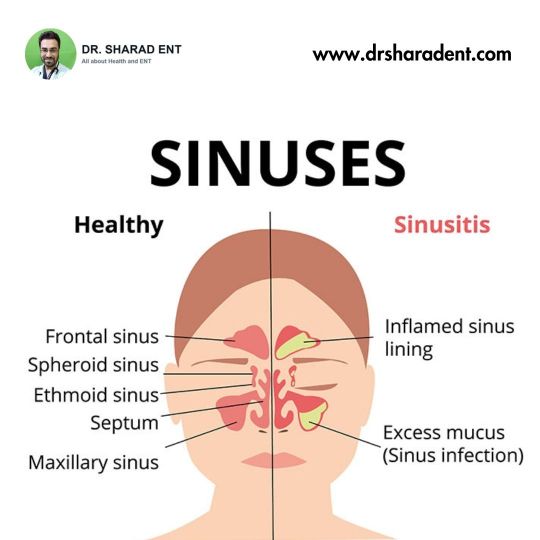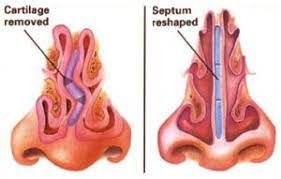#nasal and sinus congestion
Explore tagged Tumblr posts
Text
I wish that I could just waterbend all of the congestion out of my nasal passages.
#shitpost tag#shitpost#sillyposting#atla#avatar the last airbender#water bending#sinus congestion#winter#sick season#nasal congestion#i hate it here
8 notes
·
View notes
Text

My terrible spring allergies.🌾🤧😷 Dear Lord, I need relief!!! 😭


#allergies#pollen#spring#springtime#dust#dirt#too much#feel sick#funny post#funny#star trek#gifs#sneezing#nasal congestion#sinus headache#make it go away#face mask#yuck#i hate this#🤧#😭
2 notes
·
View notes
Text
sorry for so much pt posting but i cannot believe i spent YEARS going to doctors being like “what’s wrong with me? why am i always congested? why do my shoulders burn? why am i always tired and in pain?” and they were like idk man. take some vitamins i guess.
and the first day i see a physical therapist they were immediately like “oh yeah here’s the root of your problems. do these things and they should go away.” it’s been two weeks and i feel better than i’ve ever felt in years.
#turns out neck stiffness can cause sinus congestion#which the nasal doctor never told me#so there’s one problem down#turns out certain muscles in my chest and back weren’t working right and are too weak which made breathing more difficult#but the doctor said i didn’t have asthma so didn’t know how to help me#so there’s another problem down#also turns out chronic pain makes you tired. go figure. and it wasn’t a vitamin deficiency like my doctor guessed#so there’s another one down#scoliosis fucked me up. but it didn’t make me unfixable
16 notes
·
View notes
Text
Can anybody else smell sinus infections or is that just me
#it's this kinda sour mucus smell from the back of the nasal passages#I swear no matter how congested I get if it's a sinus infection I can always smell it#because it emanates up from the facial sinuses mostly#...anyways point being I think I have one
2 notes
·
View notes
Text
okay the chills & sweating fever situation is gone, thank God but now my real enemy has come forth and I am In True Misery.
#congestion so bad i can't breathe thru either nostril and i must open my mouth for air#gross.#truly the worst#why do i not Always have an eternal supply of Nasal & Sinus Pressure Decongestants in my home i KNOW i hate this SO MUCH#(tell me why i started my period s o late - like almost two weeks late!!! - in the middle of a fucking shivering-sweat cycle last night)#(MISERY)
3 notes
·
View notes
Text
Been slowly recovering from pneumonia only for my sister to give me a head cold that decided to hit me harder than a freight train going 150mph when I woke up today
#i can feel the sinus pressure in my face it's awful#and we have no medicine in the house for nasal congestion#i have forgotten what being healthy feels like
1 note
·
View note
Text
How to Reduce Sinus Pressure in Pets: Tips for Happy, Healthy Companions
Sinus pressure doesn’t just affect humans—it can also cause discomfort in our pets. Dogs and cats are especially prone to sinus issues due to allergies, infections, or environmental factors. If you’ve noticed your furry friend sneezing more than usual, pawing at their face, or having nasal discharge, they could be suffering from sinus pressure. In this article, we’ll guide you through practical,…
#cat sneezing treatment#dog nasal congestion#how to treat sinus pressure in pets#natural remedies for pet sinus issues#pet sinus pressure remedies#reduce sinus pressure in pets#sinus infection in cats#sinus relief for dogs
0 notes
Text
#Prandhara Oil#Ayurvedic Inhalant Oil#Maharishi Ayurveda Prandhara#Cold and Cough Relief Oil#Ayurvedic Nasal Drops#Natural Remedy for Headache#Prandhara for Sinus Relief#Herbal Respiratory Support#Instant Relief from Congestion#Essential Oil Blend Ayurveda#Ayurvedic Oil for Cold#Natural Decongestant Oil#Herbal Inhalation Drops#Prandhara for Cold and Flu#Ayurvedic Oil for Respiratory Health
0 notes
Text
How to Choose the Best Nasal Wash Syringe for Allergies

If you suffer from seasonal allergies, dust sensitivities, or sinus congestion, a nasal wash syringe for allergy relief could be a game-changer. Nasal irrigation is a time-tested method to clear nasal passages, reduce congestion, and relieve allergy symptoms. Unlike traditional nasal sprays, nasal wash syringes allow you to control the flow of saline solution, ensuring a deep and thorough cleanse.
But with so many options available, selecting the best nasal wash syringe can feel overwhelming. From different sizes to varied designs, knowing what features matter most can help you make an informed decision. In this guide, we’ll walk you through the benefits of using a nasal wash syringe, key factors to consider, and how to properly use one for maximum relief. By the end, you’ll be well-equipped to choose the right tool for your needs and breathe easier every day.
Why Use a Nasal Wash Syringe for Allergies?
Nasal wash syringes work by flushing saline solution through your nasal passages to remove allergens like pollen, dust, or pet dander. This process, known as nasal irrigation, can reduce congestion and irritation without the need for medications. Research, including studies from health organizations like the American Academy of Allergy, Asthma & Immunology, shows that regular nasal rinsing can ease allergy symptoms effectively.
Unlike antihistamines, which may cause drowsiness, or decongestants, which can dry you out, a nasal wash syringe offers a natural approach. It’s a straightforward tool that puts you in control of your allergy relief, making it a popular choice for those seeking alternatives to pills or sprays.
Benefits of Using a Nasal Wash Syringe
Using a nasal wash syringe for allergy relief comes with several advantages:
Effective Irrigation – Unlike spray bottles, a syringe provides controlled pressure, ensuring a deep cleanse.
Reduces Congestion – Flushing out allergens and mucus helps clear nasal passages for easier breathing.
Drug-Free Relief – Ideal for individuals seeking natural home remedies for allergy relief without medications.
Prevention of Sinus Infections – Regular rinsing helps reduce bacteria buildup, lowering the risk of sinus infections.
Customizable Use – You can adjust the saline concentration and flow to suit your comfort level.
Nasal irrigation isn’t just for allergy sufferers. If you live in a dry climate, work in a dusty environment, or frequently experience sinus congestion, a nasal wash syringe can significantly improve your breathing quality.
Key Features to Look for in a Nasal Wash Syringe
Not all nasal wash syringes are created equal. To find the best nasal wash syringes, consider these factors:
1. Material and Design
Look for medical-grade, BPA-free materials to ensure safety. Soft silicone tips can prevent nasal discomfort and provide a better seal.
2. Size and Capacity
Syringes come in various sizes, typically ranging from 30ml to 100ml. Larger capacities reduce the need for multiple refills during use.
3. Ease of Use and Cleaning
A syringe with clear volume markings and an ergonomic grip makes application easier. Also, ensure the design allows thorough cleaning to prevent bacteria buildup.
4. Adjustable Flow Control
Some models offer variable pressure options, which can be beneficial for individuals with sensitive sinuses.
Choosing a high-quality syringe ensures a comfortable and effective nasal rinse experience.
How to Choose the Right Nasal Wash Syringe for Your Needs
Selecting a nasal wash syringe depends on your specific needs. Here’s a simple breakdown:
For daily allergy relief – Choose a medium-sized syringe (50-70ml) with a soft-tip design.
For sinus infections – Opt for a larger syringe (80-100ml) with controlled pressure settings.
For children – A smaller syringe (30-50ml) with a gentle flow is best.
For travel use – A compact, leak-proof design is ideal for portability.
Step-by-Step Guide on Using a Nasal Wash Syringe
Prepare the Saline Solution – Mix sterile or distilled water with non-iodized salt.
Fill the Syringe – Draw the saline solution into the syringe.
Tilt Your Head Slightly – Lean over a sink and tilt your head sideways.
Insert the Syringe Tip Gently – Position it in one nostril.
Apply Gentle Pressure – Slowly push the solution through, allowing it to exit the opposite nostril.
Repeat for the Other Nostril – Switch sides and repeat.
Blow Your Nose Gently – Remove excess saline and mucus.
Clean the Syringe – Rinse with warm water and let it air dry.
Common Mistakes to Avoid When Using Nasal Wash Syringes
Using Tap Water – Always use distilled or previously boiled water to prevent infections.
Applying Too Much Pressure – Excess force can irritate nasal tissues.
Neglecting Proper Cleaning – Failing to clean your syringe can lead to bacterial buildup.
Overuse – Using a nasal wash syringe more than twice daily can dry out nasal membranes.
Skipping the Right Angle – Keep your head at a proper tilt to avoid discomfort.
By avoiding these common mistakes, you ensure a safe and effective nasal irrigation experience.
Conclusion
Using a nasal wash syringe for allergy relief is a simple yet effective way to manage allergies and sinus issues. By selecting the right syringe, following proper technique, and avoiding common mistakes, you can experience clearer breathing and better overall health. Source : How to Choose the Best Nasal Wash Syringe for Allergies
#nasal care#sinusitis#sinustreatment#sinus infection#nasal congestion#nasal aspirator#nasal wash syringe#nose wash syringe#nasal irrigators#allergies#allergyrelief
0 notes
Text
A stuffy nose can disrupt your sleep, leaving you feeling tired and irritable. To ease nighttime congestion, try simple remedies like using a humidifier, keeping your head elevated, or rinsing your nasal passages with saline. Avoid allergens and irritants that can worsen symptoms, and consider steam inhalation to open up nasal passages. If the issue persists, it may be time to consult an expert. Dr. Peter Baptista, a leading ENT consultant in Dubai, specializes in treating nasal congestion and related conditions. With his expertise, you can find effective, long-lasting solutions for better sleep and improved well-being.
#treatment for blocked nose at night#how to reduce stuffy nose at night#how to sleep with a stuffy nose#how to unclog your nose instantly#nasal congestion at night#best sleeping position for baby with stuffy nose#is it dangerous to sleep with a blocked nose#best sleeping position for sinus drainage
0 notes
Text
#Nasal congestion#Cold-induced nasal blockage#Runny nose#Stuffy nose#Common cold and nasal congestion#Cold symptoms#Nasal passages blocked by cold#Nasal obstruction from cold#Sinus congestion#Mucus buildup#Post-nasal drip#Rhinitis from cold#Viral upper respiratory infection (URI)#Inflammation of nasal membranes#Nasal decongestants#Cold remedies for blocked nose#Eustachian tube dysfunction from cold#Sinus pressure and cold#Chronic cold-related nasal blockage#Seasonal cold and blocked nose#health & fitness
0 notes
Text
सर्दी-जुकाम और घरेलू उपाय
सर्दी-जुकाम एक सामान्य लेकिन कष्टदायक समस्या है जो किसी भी मौसम में हो सकती है। यह खासकर तब परेशानी का सबब बनता है जब मौसम बदलता है। सर्दी-जुकाम होने पर शरीर में कमजोरी महसूस होती है और सामान्य दिनचर्या में विघ्न डालता है। इसकी शुरुआत अक्सर नाक बहने, गले में खराश और धीरे-धीरे बुखार चढ़ने के साथ होती है।खैर, घबराने की जरूरत नहीं है क्योंकि सर्दी-जुकाम के लिए कई कारगर घरेलू उपाय हैं जो आपको इस…
#Boosting Immune System Naturally#Chronic Cough Solutions#Cold and Cough Prevention Tips#Cold and Cough Remedies#Cold and Flu Relief#Cold and Flu Season Prevention#Cold Remedies During Pregnancy#Cold Symptoms and Care#Cough Relief for Kids#Cough Treatment at Home#DIY Cold Remedies#Dry Cough vs. Wet Cough Treatment#Elderberry Syrup for Cough#Eucalyptus Oil for Congestion#Garlic for Cold Treatment#ginger tea for cold#Herbal Remedies for Cold#Herbal Teas for Cold and Flu#Home Remedies for Cold#Home Remedies for Stuffy Nose#Home Treatments for Sore Throat#Honey and Lemon for Cough#How to Get Rid of a Cold Fast#Natural Cold Remedies#Natural Cough Syrup#Natural Treatments for Cough#Natural Treatments for Nasal Congestion#Saltwater Gargle for Sore Throat#Sinus Infection Relief at Home#sore throat home remedies
0 notes
Text

Top Solutions for Relieving Sinus Pressure - Dr. Sharad ENT
Explore a variety of proven natural remedies designed to Relieving Sinus Pressure and promote easier breathing. Find quick and effective solutions for sinus relief that have been known to bring relief to many individuals struggling with sinus issues.
#Relieving Sinus Pressure#Sinus#relief#nasal vestibulitis#ent#treatment#causes#ent blogs#nasal congestion#sinusitis headache
0 notes
Text
Natural Remedies For Sinus Relief
Natural Remedies for Sinus Relief Sinusitis, commonly known as sinus infection, can cause discomfort and disrupt daily activities. Here are some natural remedies to alleviate sinus symptoms: Effective Remedies: 1. Steam Inhalation: Inhale steam from a bowl of hot water infused with eucalyptus or peppermint oil to help clear nasal passages and reduce congestion. 2. Saline Nasal Rinse: Use a…

View On WordPress
0 notes
Text
Sinus Infections and Exercise: Tips for Staying Active While Sick
A sinus infection can throw a wrench into your daily routine, and for many fitness enthusiasts, the prospect of skipping workouts due to illness can be disheartening. However, it's crucial to strike a balance between maintaining your exercise routine and allowing your body the rest it needs to recover. In this blog, we'll explore tips for staying active while battling a sinus infection, ensuring you can prioritize your health without compromising your fitness goals.
Listen to Your Body:
The cardinal rule when exercising with a sinus infection is to listen to your body. While mild to moderate physical activity can often be beneficial, pushing yourself too hard may hinder your recovery. Pay attention to how you feel during and after exercise, and be willing to scale back or skip workouts if necessary.
Choose Low-Impact Activities:
Opt for low-impact exercises that are easier on the body when dealing with a sinus infection. Activities such as walking, gentle yoga, or swimming can provide the benefits of exercise without placing excessive strain on your respiratory system. These activities also help improve circulation, which can aid in the recovery process.
Modify Intensity and Duration:
If you're accustomed to high-intensity workouts, consider modifying the intensity and duration of your sessions while you're sick. Shorten your workouts and decrease the intensity to prevent overexertion. This approach allows you to maintain some level of physical activity without prolonging your recovery time.
Prioritize Outdoor Exercise:
Fresh air and outdoor exercise can be invigorating and may provide relief for sinus congestion. Choose outdoor activities like a light jog, a nature walk, or gentle cycling. However, be mindful of the weather conditions, and avoid extreme temperatures that could exacerbate your symptoms.
Stay Hydrated:
Proper hydration is essential for everyone, but it becomes even more critical when you're battling a sinus infection. Ensure you drink plenty of water before, during, and after your workout to stay hydrated. Hydration helps thin mucus, making it easier to breathe and reducing sinus congestion.
Warm-Up and Cool Down:
A thorough warm-up and cool down become even more important when you're exercising with a sinus infection. Gentle stretching and warming up your muscles can prevent stiffness, while a proper cool down helps your body recover and may alleviate any additional stress on your immune system.
Avoid Overexertion:
While exercise can boost your immune system, pushing yourself too hard can have the opposite effect. Avoid overexertion and extreme fatigue, as this may compromise your body's ability to fight off the infection. Aim for a balance between maintaining some level of activity and allowing your body the rest it needs.
Consult with a Healthcare Professional:
Before continuing or starting any exercise routine while dealing with a sinus infection, it's advisable to consult with a healthcare professional. They can provide personalized advice based on the severity of your symptoms and overall health.
Staying active while battling a sinus infection is possible, but it requires a thoughtful approach. By prioritizing low-impact activities, modifying the intensity and duration of your workouts, and listening to your body, you can maintain your commitment to fitness while supporting your body's recovery. Remember, rest is a crucial component of healing, so be kind to yourself and allow your body the time it needs to bounce back.
#sinus relief#health blog#health and wellness#health#healthcare#nasal health#nasal irrigation#sinusitis#sinus infection#treatment#exercise#nasal congestion
0 notes
Text
Septoplasty: Breathing Easier and Living Better
Septoplasty is a surgical procedure designed to correct a deviated septum, the thin wall of cartilage and bone that separates the two nostrils in the nose. A deviated septum can result in various issues, including impaired breathing and chronic nasal congestion. In this article, we will explore the details of septoplasty, its benefits, the surgical process, and what patients can expect during recovery.

Understanding Septal Deviation
A deviated septum can be congenital or the result of injury. When the septum is not in the center of the nose, it can obstruct one or both nasal passages, causing breathing difficulties. Common symptoms of a deviated septum include chronic nasal congestion, snoring, difficulty breathing through one or both nostrils, and recurrent sinus infections. Septoplasty is a surgical solution aimed at alleviating these issues.
The Septoplasty Procedure
Septoplasty is typically performed as an outpatient procedure, meaning patients can go home the same day. It can be done under local or general anesthesia, depending on the patient's preference and the surgeon's recommendation. During the procedure:
An incision is made inside the nostril to access the deviated septum.
The surgeon carefully lifts the mucous membrane covering the septum.
The deviated or displaced cartilage and bone are then reshaped or removed.
The mucous membrane is repositioned over the corrected septum, and the incision is closed with absorbable sutures.
The goal of septoplasty is to straighten the septum and improve airflow through the nostrils, thus alleviating breathing difficulties.
Recovery and Results
After septoplasty, patients can expect some discomfort, swelling, and nasal congestion for a few days to a week. It's crucial to follow post-operative instructions, which may include using saline nasal sprays, avoiding strenuous activities, and refraining from blowing the nose forcefully. Most patients can resume regular activities within a week, but complete healing may take a few weeks to several months.
The results of septoplasty can be life-changing for individuals who have struggled with nasal obstruction and breathing issues. Improved airflow can lead to better sleep quality, reduced snoring, and decreased susceptibility to sinus infections. Many patients report feeling more energetic and better able to concentrate after septoplasty.
REFERENCE:
TX Hospitals Group, Hyderabad is one of the country’s largest and fastest-growing chains of multi-super specialty hospitals.
CONTACT : 9089489089
Book an appointment now
0 notes